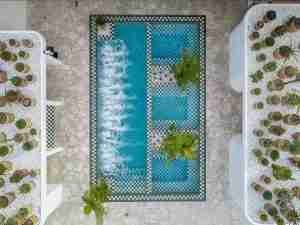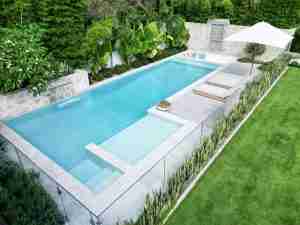When it comes to installing a swimming pool in your backyard, there are several options to consider. One of the most popular choices among Australians is a fibreglass pool. Known for their durability, low maintenance, and quick installation, fibreglass pools are a great addition to any home. This guide will walk you through the process of fibreglass pool installation, covering every aspect from planning to the final touches.
Understanding Fibreglass Pools
Fibreglass pools are pre-fabricated shells made from fibreglass-reinforced plastic. This material is not only strong and durable, but also flexible, allowing it to withstand fluctuations in soil conditions. The smooth surface of fibreglass pools also inhibits the growth of algae, reducing the amount of cleaning required.
One of the main advantages of fibreglass pools is their quick installation. Unlike concrete pools that can take several months to build, a fibreglass pool can be installed in just a few weeks. This makes them a popular choice for homeowners who want to enjoy their pool as soon as possible.
Planning Your Fibreglass Pool Installation
Before you start the installation process, it’s important to plan carefully. This includes choosing the right location for your pool, considering the size and shape of the pool, and understanding the local regulations and permits required.
Choosing the right location for your pool is crucial. You’ll need to consider factors such as sunlight exposure, proximity to trees and buildings, and access for construction equipment. It’s also important to consider the size and shape of the pool. While fibreglass pools come in a range of standard sizes and shapes, custom designs are also available.
Understanding the local regulations and permits required for pool installation is another important step. In Australia, you’ll need to comply with the Building Code of Australia and any local council regulations. This may include obtaining a building permit, ensuring the pool is properly fenced, and meeting certain energy efficiency requirements.
Installing Your Fibreglass Pool
Excavation
The first step in the installation process is excavation. This involves digging a hole in the ground that matches the shape and size of the pool shell. It’s important to ensure the hole is level and the sides are stable to prevent any issues during installation.
Once the hole is dug, a layer of sand or gravel is spread at the bottom to create a smooth and level base for the pool. The pool shell is then placed into the hole using a crane or other heavy machinery.
Plumbing and Backfill
After the pool shell is in place, the plumbing is installed. This includes the pool’s filtration system, as well as any additional features such as heating or lighting. The plumbing is then tested to ensure there are no leaks.
Once the plumbing is installed and tested, the area around the pool is backfilled. This involves filling in the space between the pool shell and the sides of the hole with sand or gravel. The backfill is compacted to ensure it’s stable and to prevent any movement of the pool shell.
Finishing Touches
The final steps in the installation process include installing the pool coping and the pool deck. The coping is the material that caps the pool shell, providing a finished look and a non-slip surface for swimmers to grip. The pool deck is the area around the pool where you can place furniture, plants, and other outdoor items.
Once the coping and deck are installed, the pool is filled with water. The water is then treated with chemicals to ensure it’s safe for swimming. Finally, the pool is ready for use!
Maintenance and Care
While fibreglass pools require less maintenance than other types of pools, they still need regular care to keep them in good condition. This includes cleaning the pool, checking the water chemistry, and inspecting the pool equipment.
Cleaning a fibreglass pool is relatively easy thanks to its smooth surface. Regular brushing and vacuuming can help keep the pool clean and prevent algae growth. Checking the water chemistry involves testing the pH, alkalinity, and chlorine levels, and adjusting them as necessary.
Inspecting the pool equipment is also important. This includes checking the pool pump and filter for any signs of wear or damage, and replacing them if necessary. Regular maintenance can help extend the life of your fibreglass pool and keep it looking its best.
Conclusion
Fibreglass pool installation is a complex process that requires careful planning and execution. However, with the right knowledge and preparation, it can be a rewarding project that adds value and enjoyment to your home. Whether you choose to install the pool yourself or hire a professional, understanding the process can help ensure a successful installation.
Ready to dive into the world of fibreglass pools? Let PoolQuotes streamline your journey to the perfect backyard oasis. Simply PoolQuotes Get Quote to receive multiple competitive offers from the most suitable and eager pool builders for your project. Fill out our quote form today and take the first splash towards a hassle-free installation experience!




